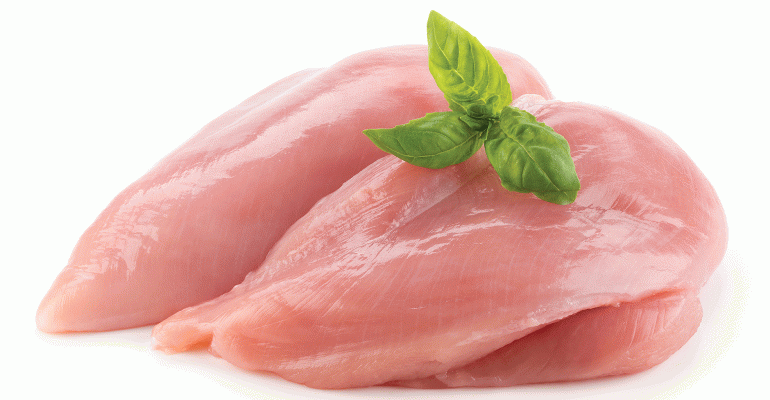Continuing a growth trajectory of growth that began a few years ago — though not at the record-level increase in 2020 — meat has been one of the most promising supermarket segments over the last year.
According NielsenIQ data, meat sales advanced to $85.2 billion in the 52 weeks ended May 28, marking a year-over-year increase of 5.8%, almost matching the 5.9% sales gain in 2021.
All subcategories showed solid performances, with chicken leading the pack at an increase of 10.6% to $15.2 billion, a sharp rise from the 4.6% gain a year earlier when the category tallied $13.9 billion in sales.
Pork sales rose 6.2%, followed by turkey at 5.3% and beef at 4.5%, all besting their 2021 numbers.
Jason Resner, vice president of fresh merchandising for Downers Grove, Ill.-based Fresh Thyme Market, which operates 71 stores in 10 states, champions value-added pork items such as sea salt shoulder roasts and marinated tenderloins.
“Valued-added customers are gravitating toward the uniqueness and variety versus price,” Resner said. “They are looking for different selections to spice up their evening meals, as they are having more of them at home. Even with pricing volatility, many shoppers still view pork as a fresh protein value.”
Value-added meats are as important as ever, as inflation mixed with the labor shortage and supply chain challenges have meant less spending at the register by many consumers this year. In response to these challenges, many retailers are upping their sliced, diced and cubed protein or pre-seasoned or marinated meats, which are more convenient for shoppers to buy.
The Food Industry Association’s “2022 Power of Meat” report revealed the value-added meat category saw a 4.7% growth in dollar sales, totaling more than $5 billion in 2021. Approximately 67% of meat shoppers surveyed noted that they “frequently” or “sometimes” purchased value-added products. When respondents were asked their top reason for buying value-added meat, 28% cited time savings, 22% better taste or flavor, and 20% simply to have something different.
After two years of cooking at home due to the pandemic, adventurous eaters are now seeking bold, authentic foods that are simple to prepare and don’t require complex pantry items or a full day of cooking, according to Annie Hennen, senior account executive for Chicago-based Midan Marketing.
“Value-added meat delivers a time-saving solution that delivers on flavor and eating experience,” Hennen explained. “The type of marketing that is effective for value-added meats depends on which demographic is seeking the product. For instance, consumers seeking its convenience are often less driven by label claims, but coupons and cross-merchandising in-store can be valuable marketing tools to use with these shoppers.”
Strong performers among fresh meat segments
In the fresh meat category, chicken wings saw a whopping 21.2% gain in dollar sales, with pork offals and chicken legs/drumsticks also scoring strong gains of 15.8% and 14.7%, respectively.
Most other segments also turned in solid growth, with year-over-year sales of chicken thighs up 12.9%, fresh ground beef up 7.8%, and chicken breasts up 5.4%. Even fresh exotic meats, such as bison and venison, saw a 3.2% gain.
Once summer grilling season is over, the next few months will be a telling point of where the meat category is heading, retailers added. Some think meat sales could drop as consumer money concerns continue, so an even more pronounced shift to value-added products may be in the cards, they said.





